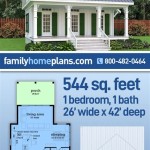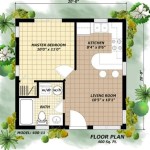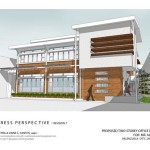Narrow Beach House Plans on Pilings: Maximizing Coastal Living
Coastal properties, particularly those with limited width, present unique architectural challenges and opportunities. Narrow beach house plans on pilings offer a practical and aesthetically pleasing solution for building on such sites. These designs, elevated above the ground on sturdy pilings, mitigate risks associated with flooding, erosion, and storm surge, while also providing opportunities to enhance views and create engaging living spaces. This article will explore the key aspects of designing and constructing narrow beach houses on pilings, highlighting the benefits, design considerations, and structural elements involved.
The Advantages of Building on Pilings
Constructing a beach house on pilings offers several compelling advantages. Firstly, it significantly reduces the risk of flooding. By raising the living space above the base flood elevation, the house is less vulnerable to water damage during storm surges or heavy rainfall. This elevation also allows floodwaters to flow freely beneath the structure, minimizing hydrostatic pressure on the walls and foundation.
Secondly, pilings help to protect the property from erosion. Coastal erosion is a constant threat to beachfront properties. Pilings allow the natural movement of sand and water beneath the house, reducing the impact of wave action on the land immediately surrounding the structure. This contributes to the long-term stability and preservation of the shoreline.
Thirdly, elevated construction can significantly improve views. By raising the living space, the house gains unobstructed views of the ocean, beach, or surrounding landscape. This elevated perspective enhances the overall living experience and increases the property's value.
Fourthly, pilings provide the opportunity for creating usable space beneath the house. This area can be used for parking, storage, or even an outdoor living area, maximizing the functionality of the property. The shade provided by the elevated structure can also create a cooler and more comfortable environment during hot weather.
Finally, building on pilings minimizes the impact on the natural environment. By elevating the structure, the existing vegetation and natural drainage patterns are less disturbed. This helps to preserve the ecological balance of the coastal environment and minimizes the environmental footprint of the construction project.
Key Design Considerations for Narrow Beach House Plans
Designing a narrow beach house on pilings requires careful consideration of several factors, including site conditions, wind loads, building codes, and aesthetic preferences. The design must be both functional and aesthetically pleasing, while also meeting stringent safety and environmental regulations.
One of the key challenges in designing a narrow beach house is maximizing interior space. Open floor plans are often used to create a sense of spaciousness and allow for flexible living arrangements. Careful consideration should be given to the placement of windows and doors to optimize natural light and ventilation. The orientation of the house should also be considered to minimize exposure to harsh sunlight and prevailing winds.
The selection of building materials is also crucial. Materials must be durable and resistant to the corrosive effects of salt air and moisture. Common choices include treated lumber, composite decking, and stainless steel fasteners. These materials are designed to withstand the harsh coastal environment and require minimal maintenance.
Designing for wind loads is paramount in coastal areas prone to strong winds and hurricanes. The structural design must be robust enough to resist high wind pressures and uplift forces. This typically involves using reinforced connections, hurricane straps, and impact-resistant windows and doors. The shape of the house can also influence its resistance to wind, with streamlined designs generally performing better than boxy shapes.
Accessibility is another important consideration. Elevators or ramps may be necessary to provide access for people with disabilities or mobility limitations. These features should be integrated into the design seamlessly and comply with all applicable accessibility codes.
The aesthetic design of the house should complement the surrounding environment. Natural materials, such as wood and stone, can be used to create a harmonious blend with the landscape. The color palette should also be chosen carefully to reflect the coastal setting. Simple, clean lines and a minimalist aesthetic are often preferred for narrow beach houses.
Structural Elements and Construction Techniques
The structural integrity of a beach house on pilings is critical to its safety and longevity. The pilings themselves are the foundation of the structure and must be designed to withstand the weight of the house, as well as the forces of wind, waves, and erosion. Proper installation of the pilings is essential to ensure their stability and load-bearing capacity.
Pilings are typically made of wood, concrete, or steel. Wood pilings are often pressure-treated to resist decay and insect infestation. Concrete pilings are durable and resistant to corrosion. Steel pilings offer high strength and can be driven deep into the ground. The choice of piling material depends on the soil conditions, the size and weight of the house, and the budget.
The pilings are connected to the house through a series of beams and joists. These structural members distribute the weight of the house evenly across the pilings and provide a stable platform for the floor. The connections between the pilings and the beams must be strong and secure to prevent movement or separation during high winds or storm surges.
The framing of the house is typically constructed using wood or steel. Wood framing is lightweight and easy to work with, while steel framing offers greater strength and durability. The framing must be designed to resist wind loads and seismic forces. Shear walls and bracing are often used to provide additional stability.
The roof is another critical structural element. It must be designed to withstand high winds and heavy rainfall. Common roofing materials include asphalt shingles, metal roofing, and tile roofing. The roof should be properly sealed and insulated to prevent leaks and energy loss.
Proper drainage is essential to prevent water damage and erosion. Gutters and downspouts should be installed to collect rainwater and direct it away from the house. The area around the pilings should be graded to promote drainage and prevent water from pooling around the foundation.
The construction of a beach house on pilings requires specialized knowledge and expertise. It is essential to hire a qualified contractor with experience in coastal construction. The contractor should be familiar with local building codes and regulations and have a proven track record of successful projects. Regular inspections should be conducted during the construction process to ensure that the work is being done correctly and that all safety standards are being met.
In many coastal areas, specific permits and approvals are required before construction can begin. These permits may involve reviews by local planning boards, environmental agencies, and building departments. It is important to research and comply with all applicable regulations to avoid delays or fines.
Sustainability is becoming increasingly important in coastal construction. Energy-efficient windows, insulation, and appliances can help to reduce energy consumption and lower utility bills. Solar panels can be installed on the roof to generate electricity. Water-saving fixtures and landscaping can help to conserve water resources. Building with sustainable materials, such as recycled wood and bamboo, can minimize the environmental impact of the construction project.
The long-term maintenance of a beach house on pilings is essential to preserve its value and structural integrity. Regular inspections should be conducted to identify and address any signs of damage or deterioration. The pilings should be inspected for rot, corrosion, or cracking. The siding, roofing, and windows should be inspected for leaks or damage. Any necessary repairs should be made promptly to prevent further damage.
Preventive maintenance measures, such as applying sealant to the wood and cleaning the gutters, can help to extend the life of the house. Landscaping should be properly maintained to prevent vegetation from interfering with the structure or drainage. With proper care and maintenance, a narrow beach house on pilings can provide a comfortable and enjoyable living space for many years to come.

Elevated Piling And Stilt House Plans Coastal Home Beach Cottage Decor On Stilts

Coastal Charm Embrace The Serenity Of Small Beach House Plans On Pilings

Home Plan 003 127 Great House Design

Addley Beach Coastal House Plans From Home

120 Best House On Stilts Ideas Beach Plans

Ina Walk Coastal House Plans From Home

House Plan 028 00161 Coastal 1 672 Square Feet 4 Bedrooms Bathrooms Beach Floor Plans

Narrow Lot Beach House Plans Floor Designs Houseplans Com

Home Plan Ch464

Plan 052h 0084 The House








